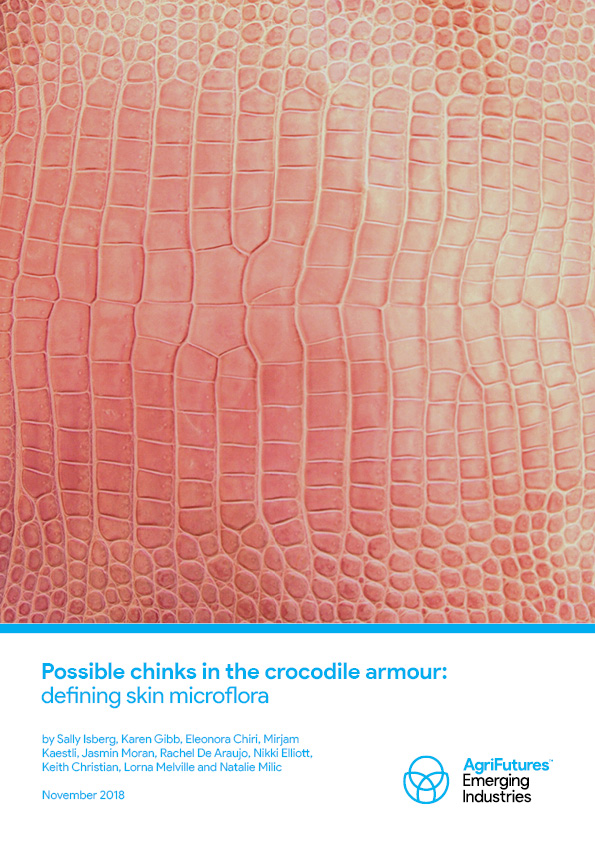Industry placemat: Crocodile
This placemat serves as a resource for those interested in the emerging crocodile industry. Within this placemat, you’ll find essential fast facts alongside the fundamental...

40 pages
Published: 11 Mar 2019
Author(s): Sally Isberg, Karen Gibb, Eleonora Chiri, Mirjam Kaestli, Jasmin Moran, Rachel De Araujo, Nikki Elliott, Keith Christian, Lorna Melville, Natalie Milic
ISBN: 978-1-76053-038-9
Download report PDF
DownloadPurchase a hard copy - AUD $45
Crocodiles are iconic Australian animals. They are also the source of fine, hard wearing leather prized by the world’s leading fashion houses. The commercial crocodile farming industry is an important feature of the sustainable management of the species. Meeting customer specifications for skin quality underpins investments in this iconic emerging industry.
Australian producers have a strong focus on ensuring leather quality and crocodile tanneries can be very selective about the quality of skins they purchase. The challenge for producers is to meet market standards. Thus, understanding more about what threatens final skin quality is paramount.
This project had two goals. One was to understand the microflora of crocodile skins to understand what were the greatest bacterial threats as well as those that showed some potential for exploitation. The second was to strategically sample lesions to quantify certain threats such as poxvirus and Dermatophilus sp., and if not these, attempt to find other pathogens of interest.
This study clearly shows the risk that pathogens pose to crocodile skin quality. An assessment of current cleaning and husbandry regimes should now been undertaken to reduce these risks. Developing quantitative genetic methods will assist with these decision making processes and ensure that Australian producers are continuing to produce the best quality crocodilian skins in the world.